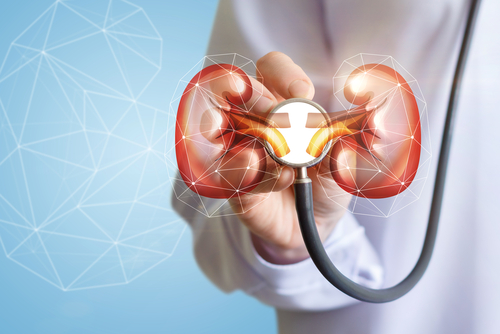Study Examines How Other Disorders Correlate With Kidney Disease in Alström Syndrome

Kidney disease may be a primary manifestation of Alström syndrome. However, the development of renal problems may be nourished by the co-existence of other common disorders such diabetes, hypertension, and being insulin resistant, a single-center study suggests.
The study, “Alström syndrome: Renal findings in correlation with obesity, insulin resistance, dyslipidemia and cardiomyopathy in 38 patients prospectively evaluated at the NIH clinical center,” was published at the journal Molecular Genetics and Metabolism.
Alström syndrome is a rare inherited disease that affects several organs in the body, and is caused by genetic mutations in the ALMS1 gene. Although it remains unclear what the role of the ALMS1 encoded gene is, it is believed to be involved in hearing, vision, regulation of body weight, and functions of the heart, kidney, lungs, and liver.
People affected by Alström syndrome can develop varying symptoms at different ages. Vision and hearing symptoms often appear during infancy, while obesity and insulin resistance begin to develop during the first year of life. Other manifestations, such as liver and heart problems, are often detected during childhood or even adulthood.
Chronic progressive kidney impairment (nephropathy) with eventual progression to kidney failure is a common complication of Alström syndrome. However, there is limited information on renal disease among these patients.
That’s why a team led by researchers at the National Institutes of Health (NIH), reviewed the clinical records of 38 patients with Alström syndrome who were evaluated from February 2013 to June 2014 (NCT00068224).
Patients’ ages ranged from 1.7 to 37.9 years, with 12 patients being 10 or younger, 13 being older children and adolescents (age 11 to 17), and 13 adult patients.
All participants had lost their vision followed by hearing loss. They also experienced severe metabolic abnormalities during early childhood.
Participants’ weight was within normal range in only five of children, while two were overweight, and the remaining 18 were obese. Among the 13 adult patients, two were overweight and 11 were obese. About 58% of the children and all the adults had insulin resistance, and type 2 diabetes was diagnosed in 20% of children and 69% of adults in the group analyzed.
Additional evaluations showed that blood pressure was increased in 11 children and seven adults, being clinical relevant (stage 1 hypertension) in six children and one adult. The majority of patients (79%) had liver changes detectable by ultrasound, and approximately half of patients (45%) had heart disease (cardiomyopathy).
“At the time of their evaluation at the NIH Clinical Center, all 38 patients were clinically stable,” researchers reported.
Genetic analysis showed that 37 patients had genetic mutations in both copies of ALMS1 gene, while one patient had one single mutation.
Assessment of patients’ renal function revealed it became progressively impaired with age, with significantly reduced filtration rate (a measure of kidney function) at older ages. Seven adult patients met the criteria for chronic kidney disease diagnosis.
More than half (57%) the patients had proteinuria (high levels of protein in their urine), another indication of renal impairment. However, urine protein levels were not found to increase significantly with age.
The team also found that after adjusting the results according to the patients’ ages, there was no significant associations between markers of kidney disease and diabetes, HDL cholesterol, triglycerides, or hypertension.
Imaging analysis of kidney structures showed that several patients had altered kidney tissues, which could correlate with impaired kidney function.
“Given the extreme rarity of Alström syndrome, it is not surprising that detailed biochemical and imaging characteristics of kidney disease were not previously analyzed in the context of other organ dysfunction,” researchers wrote.
Overall, the study findings suggest that “kidney disease in Alström syndrome is most likely a primary manifestation of the syndrome caused by the primary disease process due to lack of ALMS1 protein,” they added.
According to the team, although the control of type 2 diabetes “may decrease kidney-related morbidity and mortality in Alström syndrome, identification of novel therapies that target the primary intracellular defects in kidneys as well other involved organs in Alström is needed,” they concluded.




